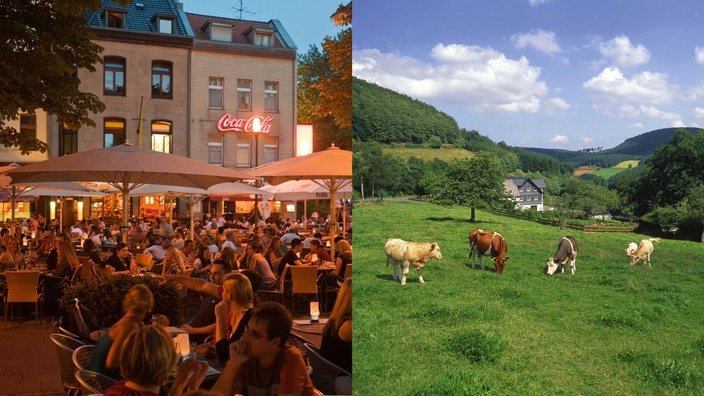According to a study, Germany’s major cities are increasingly losing residents to the surrounding areas. According to the study, the city of Cologne is the third most affected. One reason for this is the lack of affordable housing.
While people used to be drawn to the metropolises, there has been a growing trend toward urban migration in recent years. This was the result of an evaluation by the data analysis company Empirica Regio for the cities of Berlin, Hamburg, Munich, Cologne, Frankfurt, Düsseldorf and Stuttgart.
According to the study, more than 47,000 people migrated from Germany’s seven largest cities to directly neighboring counties or independent cities in 2018. In 2021, the figure was already around 56,600, according to the study, which is available to the dpa news agency. In particular, many people from Berlin (17,249), Hamburg (11,145), Cologne (7,894) and Frankfurt (6,653) moved to the surrounding area.
Too little affordable housing
Between the years 2010 and 2013, the metropolitan areas were still growing strongly, according to Empirica Regio. But since 2018, the trend toward migration to the surrounding areas has intensified, according to the study, which is based on data from the Federal Statistical Office. The main reason: there is too little affordable housing in the metropolises.
More and more people are willing to travel longer distances to the cities – even rural districts at a distance of one hour and more benefit from this, said Jan Grade, managing director of Empirica Regio. For metropolitan areas, that has consequences, he said. “In particular, the migration of families must be a concern for cities, since they are usually in a good financial position and revitalize a city.”
For the surrounding communities, in turn, the urban exodus brings “growing pains” as well as opportunities, Grade said: more and more traffic and a need for building land. In addition, they would have to strengthen the supply of daycare centers and schools, as well as expand public transportation and energy supply.
Pandemic as trend amplifier
In expensive cities such as Frankfurt and Munich, immigrants from the rest of Germany are often no longer drawn to the center, but directly to the surrounding areas. Even in the wake of the Corona pandemic, many people left the cities with the desire for more distance. But the pandemic is only a trend amplifier and not the only cause, Grade said.
The migrations do not mean that all metropolitan areas are necessarily shrinking, however. Many cities are gaining residents from the rest of Germany or from abroad. According to Empirica Regio, Berlin (25,482) and Hamburg (9,255) are leading in international immigration.
Berlin grew in spite of this
In Berlin, this meant that the capital continued to grow in 2021, even though many people migrated to the surrounding areas. “Berlin in particular has a lot of appeal and is attractive as a labor market,” says Grade.
Immigration from abroad had long fed the growth of major cities. But since 2015 – the peak of the refugee crisis and also of immigration from other EU countries – international migration has been slowing. Then, with the 2020 Corona pandemic and temporarily closed borders, international immigration temporarily collapsed altogether.
According to Empirica Regio, this recovered last year, but did not reach pre-crisis levels. This could change in the current year: With refugees fleeing the war in Ukraine, Grade expects a “population surge” in Germany.
Source of the news: https://www1.wdr.de





